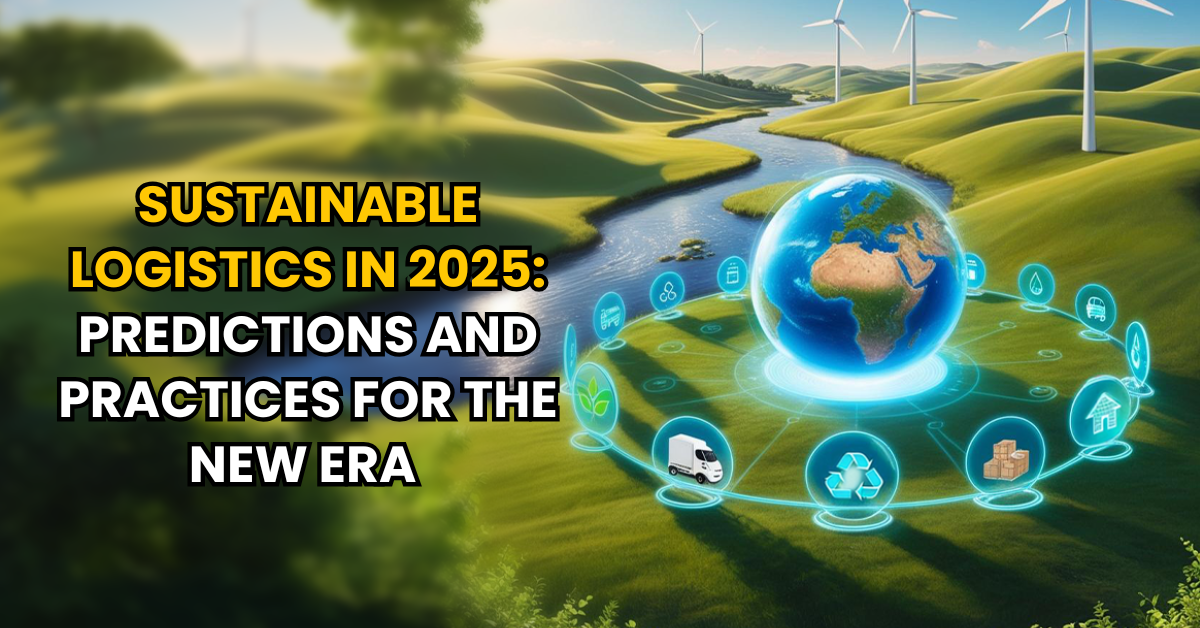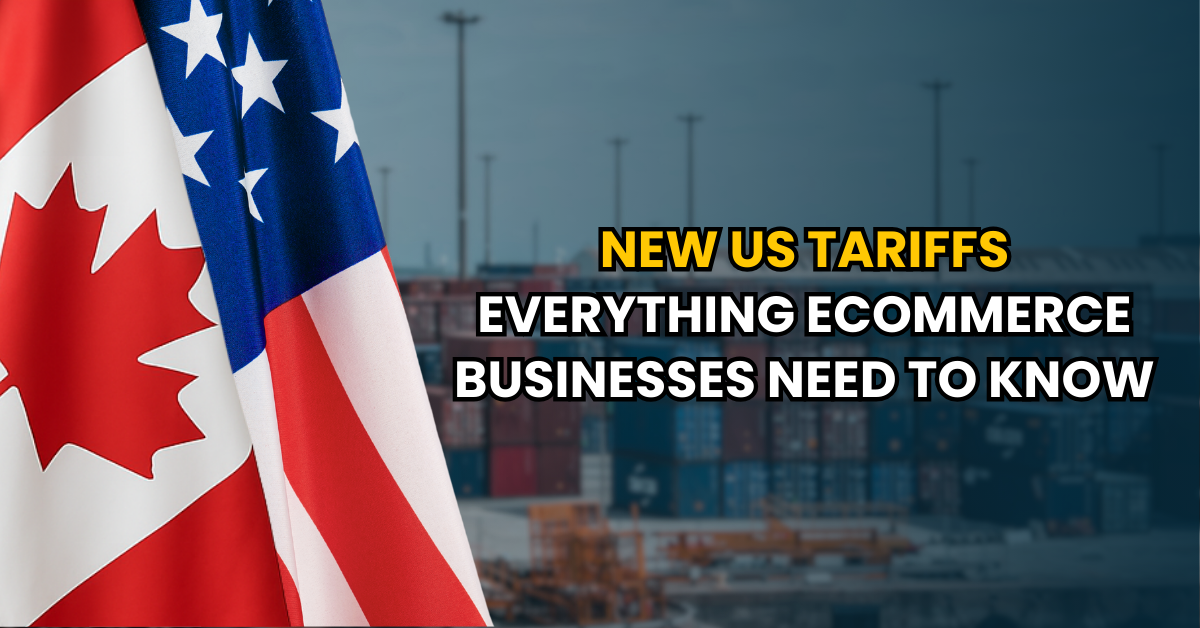Sustainability isn’t just a choice anymore—it’s the way forward.
As businesses across North America confront the realities of climate change, sustainability has evolved from a buzzword into a core business principle. Today, it’s about more than reducing carbon footprint; it’s about reshaping logistics strategies to protect the planet while building resilient, efficient operations.
The truth is, that sustainability offers a dual win—less environmental impact and smarter, streamlined processes. It’s not just a fleeting trend; it’s the cornerstone of future-ready business strategies.
As we step into 2025, it’s clear that the momentum toward sustainable logistics is only growing stronger. This blog takes a closer look at key predictions shaping the future, actionable practices businesses can adopt, and how these changes are transforming the logistics landscape.
Sustainability is a movement reshaping the way the world moves forward. Let’s explore how.
The push for sustainability in logistics
The logistics sector significantly impacts the environment, contributing to approximately 30% of global carbon emissions. Without effective measures, these emissions are projected to rise, potentially accounting for up to 40% by 2050. This escalation underscores the urgent need for sustainable logistics solutions.
Why sustainability is a priority
- Consumer demand: A survey by NielsenIQ revealed that 78% of North American consumers consider a sustainable lifestyle important. Another survey revealed that over 60% of respondents expressed a willingness to pay more for products with sustainable packaging, highlighting the growing demand for environmentally responsible business practices.
- Regulatory pressures: The Canadian government has committed to reducing greenhouse gas (GHG) emissions by 40% below 2005 levels by 2030, placing increased scrutiny on carbon-intensive industries like logistics. Compliance with these regulations isn’t optional—it’s becoming a core operational requirement.
- Cost efficiency: Sustainable practices such as route optimization and energy-efficient vehicles often reduce fuel and operational costs, providing a financial incentive for businesses. For instance, studies show that optimized delivery routes can reduce fuel consumption by up to 20%.
- Brand reputation: Companies with a clear commitment to sustainability gain trust and loyalty among consumers and stakeholders, giving them a competitive edge in the marketplace.
Key predictions for sustainable logistics in 2025
- Electrification of fleet vehicles: By 2025, we expect a significant surge in electric vehicle (EV) adoption within the logistics sector. In North America, the electric vehicle market is projected to surpass USD 288.95 billion by 2030, driven by significant growth in both passenger and commercial EVs, including delivery vehicles. Furthermore, the U.S. electric vehicle market is anticipated to grow at a compound annual growth rate (CAGR) of approximately 13.7% from 2025 to 2034, highlighting strong expansion ahead. Many logistics providers are transitioning to EV fleets to reduce emissions and fuel costs.
Case in point: Ecom Logistics is spearheading this trend by incorporating electric delivery vans into its last-mile delivery services, significantly lowering carbon emissions. - Increased use of AI and IoT for route optimization: Artificial intelligence (AI) and the Internet of Things (IoT) will continue to transform logistics. Advanced AI algorithms optimize delivery routes, cutting down on fuel consumption. Meanwhile, IoT devices provide real-time tracking and monitoring, improving shipment efficiency.
- Focus on circular supply chains: Circular supply chains—designed to reduce waste by reusing, recycling, or refurbishing materials—will gain traction. Businesses will increasingly partner with logistics providers who can integrate reverse logistics into their operations.
- Carbon offsetting and reporting as standard practice: Transparent carbon reporting and offsetting programs will become standard for logistics companies. A survey by McKinsey reveals that the demand for green logistics is projected to reach approximately $50 billion in 2025, representing about 2% of total logistics spending. This figure is expected to surge to around $350 billion by 2030, accounting for approximately 15% of the total logistics spend.
Best practices for sustainable logistics: How businesses can prepare
- Conduct a sustainability audit
Evaluate your logistics operations to identify inefficiencies in fleet emissions, packaging practices, and energy usage. Use these insights to pinpoint areas for sustainable improvements. - Adopt green packaging solutions
Transition to biodegradable, recyclable, or reusable packaging materials. Lightweight packaging further reduces shipping-related emissions. Partner with suppliers who prioritize eco-friendly solutions to streamline these efforts. - Transition to energy-efficient warehousing
Upgrade to solar-powered facilities, LED lighting, and automated systems in warehouses to reduce energy consumption and lower emissions. - Prioritize employee training
Educate teams on best practices for sustainability, including energy conservation in warehouses and fuel-efficient driving techniques for delivery personnel. - Collaborate with sustainable logistics partners
Partner with 3PL providers that prioritize environmental goals. Ecom Logistics offer services such as energy-efficient warehousing, and eco-friendly packaging to seamlessly integrate green practices into your supply chain. Furthermore, find eco-conscious delivery partners such as Ecom Express who use EV vans and route optimization to reduce carbon footprint. - Set measurable goals
Establish clear sustainability objectives, such as reducing emissions or waste, and track your progress regularly. Metrics like carbon footprint and packaging waste help measure the effectiveness of your initiatives and guide future strategies.
By implementing these practices, businesses can align their logistics operations with sustainability goals while improving efficiency and building a competitive edge.
Ecom Logistics: Driving sustainability
Ecom Logistics is dedicated to leading the way in sustainable logistics by integrating environmentally responsible practices into its operations. Here’s how we are mastering sustainability:
- Green fleet integration: We are actively transitioning our fleet to electric vehicles, aiming to replace 100% of their fleet with electric vehicles by 2030.
- Energy-efficient warehousing: Our warehouses are designed with sustainability in mind, utilizing energy-efficient lighting and automated systems to reduce energy consumption and greenhouse gas emissions.
- Sustainable packaging solutions: We offer eco-friendly packaging options, including biodegradable, recycled, and recyclable materials, to help reduce waste.
- Tech-driven route optimization: We leverage advanced technology to optimize delivery routes, enhancing efficiency and reducing fuel consumption.
By combining cutting-edge technology with a strong commitment to environmental sustainability, Ecom Logistics is empowering businesses to align their logistics operations with their sustainability goals.
The role of government and policy in driving sustainability
Governments play a critical role in shaping sustainable logistics practices. Policies and incentives are essential to accelerating the adoption of green technologies and practices:
Tax incentives for green investments:
The Canadian government offers tax credits and grants to businesses investing in energy-efficient technologies and sustainable infrastructure. For instance, the Clean Economy Investment Tax Credits provide incentives for investments in clean technology, clean electricity, clean hydrogen, and related areas.
Carbon pricing mechanisms:
Canada has implemented a carbon pricing framework that includes carbon taxes and cap-and-trade systems to encourage businesses to reduce their greenhouse gas emissions. This approach allows provinces and territories to design their own pricing systems or adopt the federal system, ensuring flexibility and effectiveness in reducing emissions.
Strict emission standards:
The Canadian government has introduced regulations to increase the availability of zero-emission vehicles (ZEVs). Under the new Electric Vehicle Availability Standard, automakers and importers must meet annual ZEV sales targets, aiming for an increasing share of emission-free vehicles in the market.
Funding for sustainable research:
Canada has committed significant funding to support research and development in sustainable logistics solutions. For example, the Hydrogen Strategy for Canada outlines investments to advance the hydrogen sector, including funding for hydrogen production projects and related technologies.
These policies and incentives are designed to accelerate the adoption of green technologies and sustainable practices within the logistics sector, aligning with Canada’s broader environmental goals.
A step towards a greener tomorrow
Sustainability in logistics is more than an ethical responsibility—it’s a strategic advantage. Businesses that embrace sustainable practices will earn consumer trust, lower costs, and stay ahead of regulatory demands.
Ecom Logistics exemplifies this transformation, offering eco-friendly solutions such as EV fleets and energy-efficient warehousing. By acting today, businesses can build a resilient, environmentally conscious logistics framework that leads the industry into a sustainable future. Contact us to learn more about how we can help you hit the green goals in 2025.
Frequently asked questions
1. What is sustainable logistics, and why is it important?
Sustainable logistics involves implementing environmentally friendly practices in the supply chain, such as reducing emissions, optimizing transportation, and using eco-friendly materials. It’s important because it helps combat climate change, meets consumer demand for green practices, and often reduces costs through efficiency.
2. How can small businesses adopt sustainable logistics practices?
Start with simple steps like using recyclable packaging, optimizing delivery routes, and collaborating with eco-conscious logistics providers. Gradually integrate energy-efficient technologies and monitor your carbon footprint to identify areas for improvement.
3. What are circular supply chains?
Circular supply chains focus on minimizing waste by reusing, recycling, or refurbishing materials. Unlike traditional linear supply chains, they ensure products and materials are part of a continuous lifecycle, reducing environmental impact.
4. What role does technology play in sustainable logistics?
Technology, such as AI and IoT, optimizes routes, monitors real-time data, and reduces fuel consumption. These tools improve efficiency and transparency, helping businesses meet sustainability goals while cutting costs.
5. How do government regulations affect sustainable logistics?
Governments encourage sustainable logistics through policies like carbon pricing, tax incentives, and stricter emission standards. Compliance not only reduces environmental impact but also ensures businesses remain competitive and avoid penalties.




